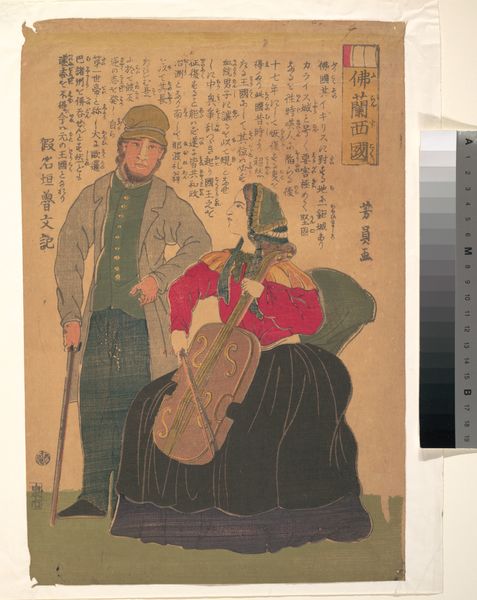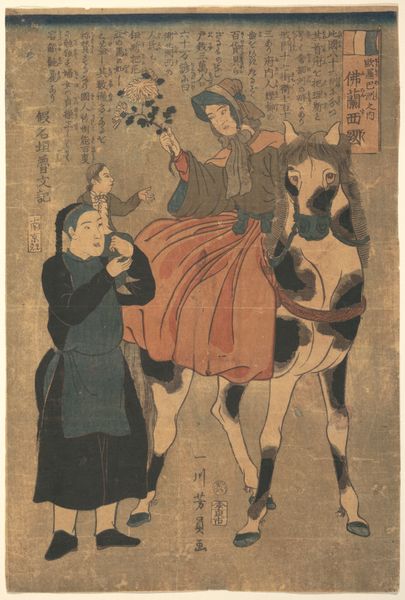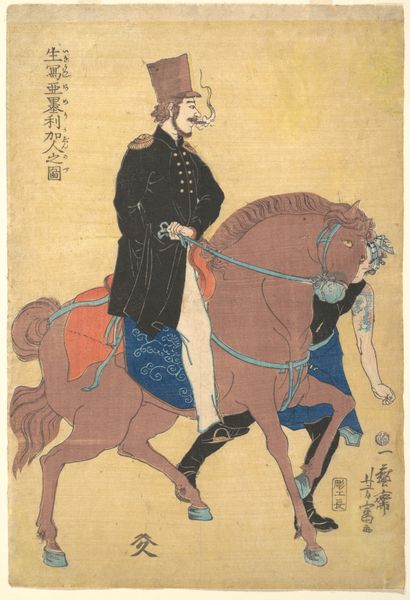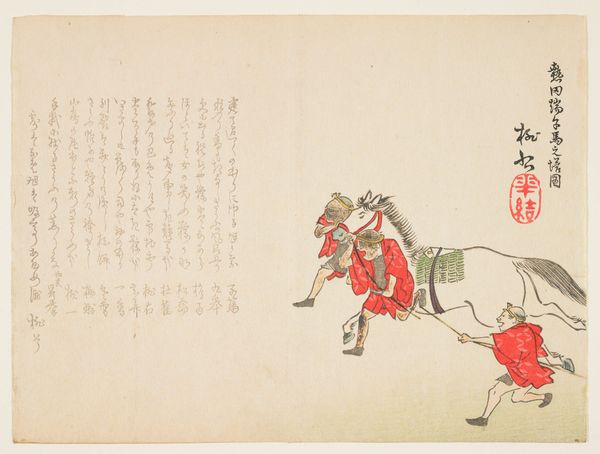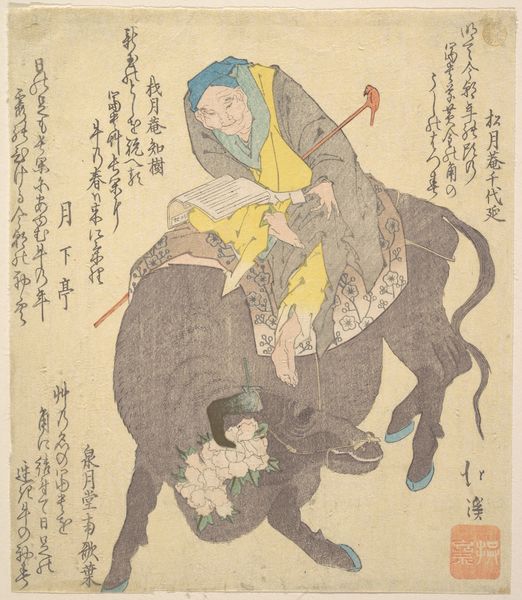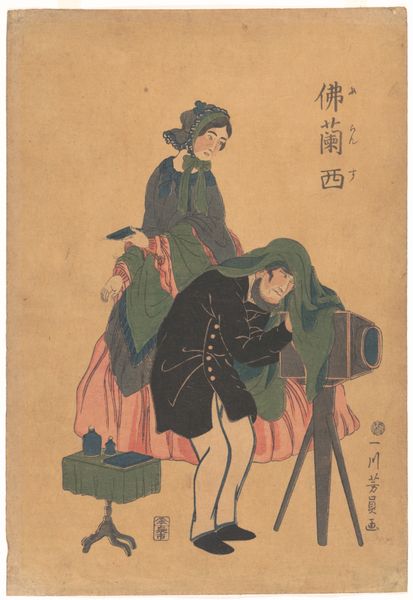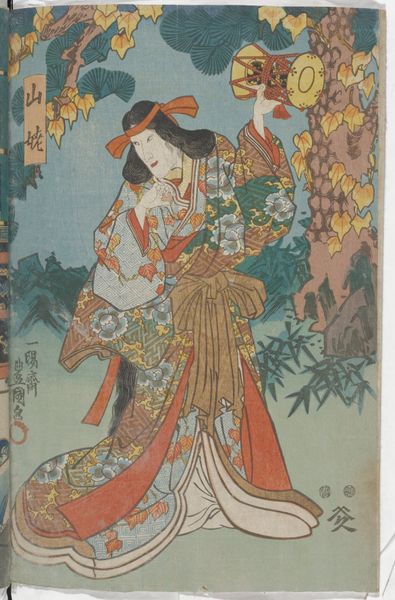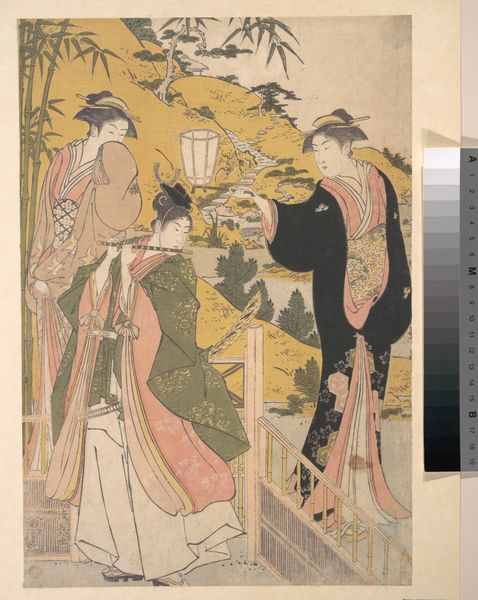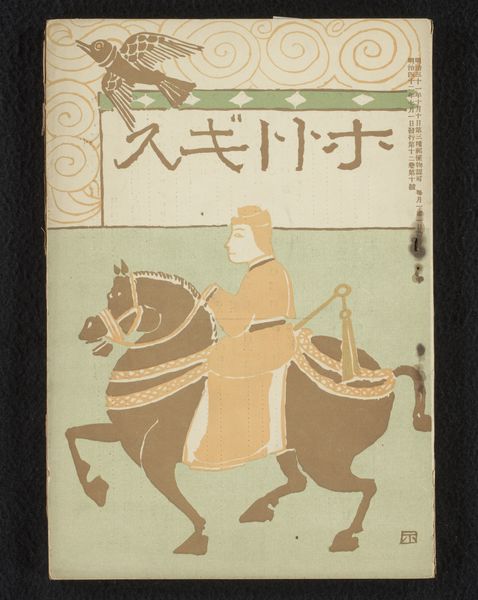
print, etching, photography, woodblock-print
#
portrait
#
water colours
# print
#
etching
#
asian-art
#
ukiyo-e
#
photography
#
woodblock-print
#
orientalism
#
horse
#
men
#
line
#
genre-painting
Dimensions: H. 14 1/2 in. (36.8 cm); W. 10 in. (25.4 cm)
Copyright: Public Domain
Curator: This striking woodblock print, "Views of Foreigners" by Utagawa Yoshitomi, created in 1861, offers us a glimpse into a pivotal moment in Japanese history. Editor: The horses feel strangely elongated, almost caricatured. And that intense, somewhat unnatural, blue in the woman's skirt—it dominates the composition! Curator: Indeed. This work emerges from a time of increased contact between Japan and the West, when artists like Yoshitomi began depicting foreigners, reflecting both fascination and, perhaps, a degree of cultural curiosity bordering on satire. Editor: Satire? The lines are so clean and the figures quite contained, despite the exaggeration of certain features. Where do you see the satire coming through? Curator: It's subtle. Consider the title itself, "Views of Foreigners," almost implying a detached observation. These depictions often played into existing stereotypes and anxieties surrounding foreign influence in Japan at that time. The deliberate exaggeration could be a form of cultural commentary. Editor: Perhaps. The lines defining their forms are crisp and almost brittle, especially in contrast to the soft gradations of color. But those blocks of color! The juxtaposition of the bright pink bodice against the vibrant blue of the skirt... It creates a kind of unsettling harmony. Curator: Think about how ukiyo-e prints were disseminated, how they shaped public perception. These images would have influenced how Japanese people viewed and understood foreigners during this period of intense societal change. The political undertones are never too far from the surface. Editor: The flatness, the linear quality… it’s almost like a precursor to pop art. Yet there's also a very conscious Japanese sensibility to it. How does it all balance together, this interplay of external influences and traditional techniques? Curator: It highlights the dynamic exchange that occurs when cultures collide. Yoshitomi provides a window into Japan’s evolving relationship with the outside world, mediated through artistic interpretation and social commentary. Editor: A fascinating blend indeed! I hadn’t quite considered the socio-political layer embedded within the formal arrangement of line and color. Curator: Understanding that intersection can really enrich our understanding of this piece. It encourages a deeper appreciation of the context in which art is made and the role it plays within a broader societal dialogue.
Comments
No comments
Be the first to comment and join the conversation on the ultimate creative platform.
